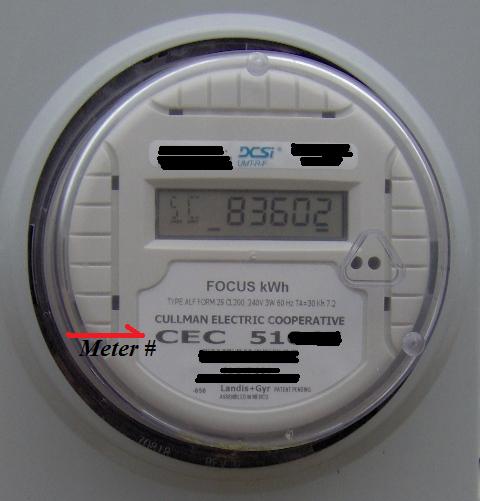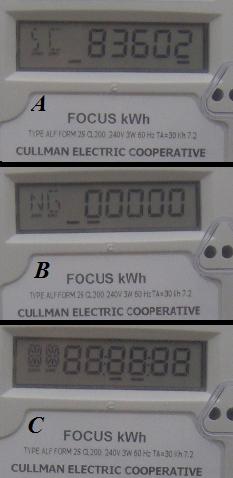 In our continuing series on reading your actually going to combine meters, we are running through the four main types of meters in use today (Water, Gas, Propane, and Electric) along with a few helpful tips for possibly troubleshooting that dreaded “this just can’t be right…” Generally, our final item is well known for causing a crescendo of loud clunking sounds, as people open up their electric bills and their jaw proceeds to hit the floor. While many of us are using the regular style electric meters (the ones with dials & a spinning disc), there has been a push lately to change everyone over to newer “Smart-Meters.” No matter which type of meter you have, it measures your how many KWh yours you use. A KWh is short for Kilo Watt Hour, which is equivalent to 1000 watts being used for an hour, or a 100-watt bulb being left on for 10 hours
In our continuing series on reading your actually going to combine meters, we are running through the four main types of meters in use today (Water, Gas, Propane, and Electric) along with a few helpful tips for possibly troubleshooting that dreaded “this just can’t be right…” Generally, our final item is well known for causing a crescendo of loud clunking sounds, as people open up their electric bills and their jaw proceeds to hit the floor. While many of us are using the regular style electric meters (the ones with dials & a spinning disc), there has been a push lately to change everyone over to newer “Smart-Meters.” No matter which type of meter you have, it measures your how many KWh yours you use. A KWh is short for Kilo Watt Hour, which is equivalent to 1000 watts being used for an hour, or a 100-watt bulb being left on for 10 hours
Regular Meter:
Most regular electrical meters either have four or five dials and just like similar meters we discussed earlier, the numbers are read from the left to the right / from the biggest number to the smallest. You should also note that every other hand actually moves counterclockwise (it is a gearing & reduction issue). If the hand happens to be between two numbers or the next number has not hit zero yet, you would use the lower number; in the case above, you would read it as 46392 KWh.
“Smart Meters”:
Do to issues with demand exceeding capacity, and infrastructure issues a push was made to create a “smart-grid”. In order to build and run this smart-grid, the utilities needed “smart-meters” to make it work properly. Now while the numbers are not fully known yet, based on all the information available, I would estimate that almost 25% of the houses have one and most utilities hope to have this rollout completed within the next few years. I know Alabama Power has fully completed their rollout along with most of the Electrical Co-Op’s in Alabama. (Based off one report I saw the Co-Op’s are leading the way in implementing their rollouts, with government run programs coming in dead last)
 Just like in real life, some meters are actually smarter than others so do not freak out if you see more than the three screens I show above. In some cases, the additional screens will display the date, the time, or in the case of commercial meters, your demand reading. In some cases, you may only see one screen with the display of how much KWh you have used.
Just like in real life, some meters are actually smarter than others so do not freak out if you see more than the three screens I show above. In some cases, the additional screens will display the date, the time, or in the case of commercial meters, your demand reading. In some cases, you may only see one screen with the display of how much KWh you have used.
- A) Total KWh Used
- B) Current Electrical Usage
- C) Diagnostic screen – all 8’s generally means no issues detected
- Remember that spinning little dial in the older ones – well that has been replaced with the little moving dashes under the displays
If you are on a specialty plan like Time-of-Use plans, you will have to refer to your electric company’s site for the appropriate way to read your meter. (Example for SRP)
This just cannot be right:
Just as we mentioned in prior articles, while there is a chance they have the wrong meter listed, or there might be an issue with said meter, the chances of that are pretty low. With that said, it never hurts to check. Checking your meter number is easy, as it is shown on your meter & your bill. (For one example – check out our article on Smart Meters). If that checks out, and you just know it has to be the meter, you will need to contact your electric provider. I have seen cases, where people’s bills seemingly go up after the meter is changed out. In most cases, that is not an issue with the new meter, but an issue with the older meter.
Assuming that those two do not apply & your bill is correct, the issue then becomes how can I reduce my bills? While you can (and should) call us at AlaGBS to perform an Energy Audit, there are few other items you should at least take a look at first or in conjunction with an audit: Tips & Tricks article, 25 Conservation Tips, stay up on your home maintenance.
Additional Info & Websites:
- HTRC: Monitoring your usage with Smart Meters & MyUsage
- HTRC: Free spreadsheet to help you monitor your utility usage & gas mileage
- HTRC: Reading your Water, Gas, Propane, and Electric Meters

